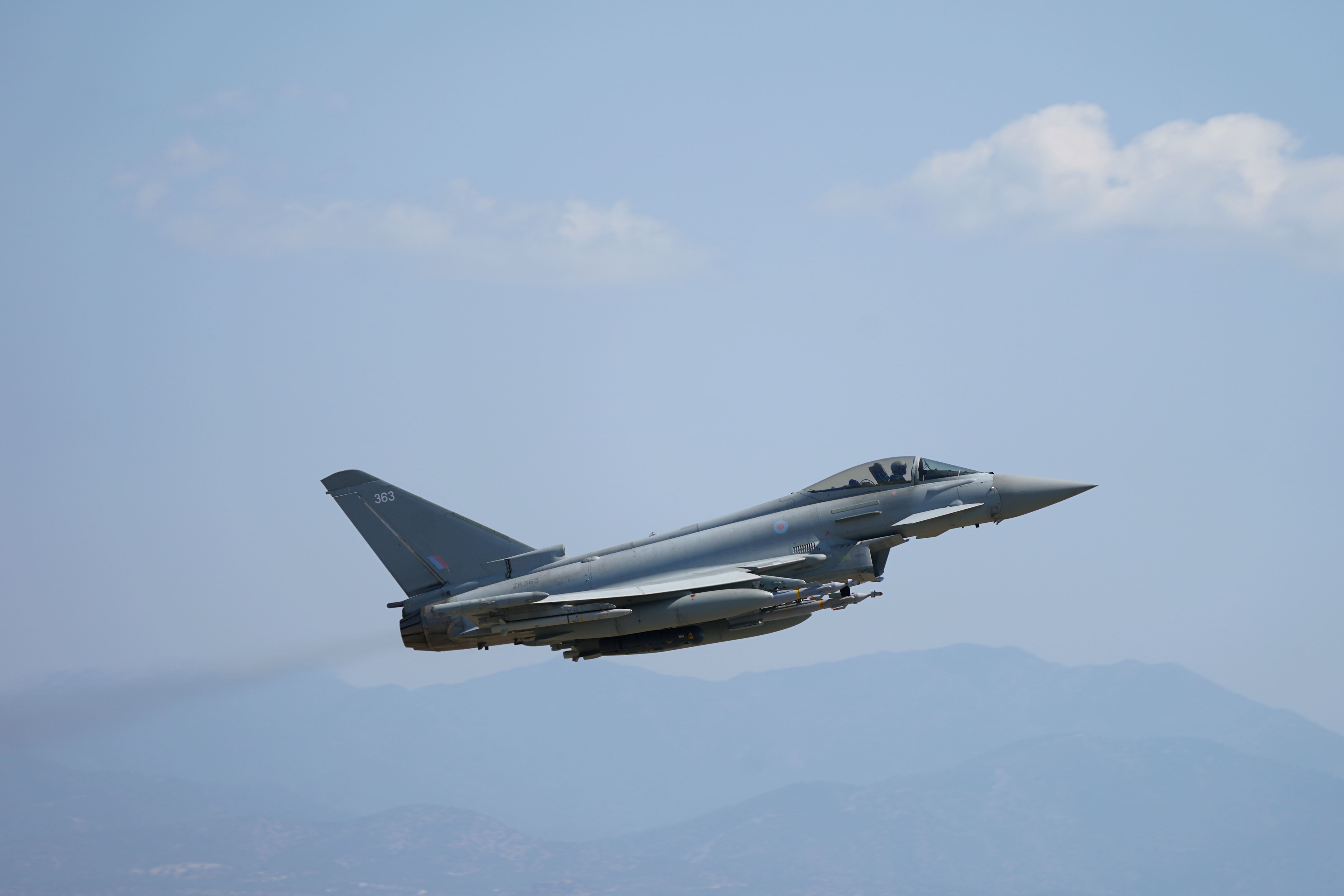Which fighter jets and bombs are being used to strike Houthi rebel sites?
The UK’s Royal Air Force has joined US forces in bombing military facilities used by Houthi rebels in Yemen for a second time.

Your support helps us to tell the story
From reproductive rights to climate change to Big Tech, The Independent is on the ground when the story is developing. Whether it's investigating the financials of Elon Musk's pro-Trump PAC or producing our latest documentary, 'The A Word', which shines a light on the American women fighting for reproductive rights, we know how important it is to parse out the facts from the messaging.
At such a critical moment in US history, we need reporters on the ground. Your donation allows us to keep sending journalists to speak to both sides of the story.
The Independent is trusted by Americans across the entire political spectrum. And unlike many other quality news outlets, we choose not to lock Americans out of our reporting and analysis with paywalls. We believe quality journalism should be available to everyone, paid for by those who can afford it.
Your support makes all the difference.The UK’s Royal Air Force has joined US forces in bombing military facilities used by Houthi rebels in Yemen for a second time.
The strikes on Monday were launched against the Iranian-backed group after they started targeting ships in the Red Sea, a key international trade route, and follow bombings on Houthi sites on January 11.
Four Royal Air Force Typhoon FGR4s, supported by a pair of Voyager tankers, joined US forces in a strike against Houthi sites. The aircraft used Paveway IV precision guided bombs to strike multiple targets at two military sites in the vicinity of Sanaa airfield.
Here the PA news agency looks at the powerful fighter jets, weapons and warships the UK military has sent to the region.
Typhoon FGR4s
Four 52ft (16m) long RAF Typhoon FGR4 fighter jets, supported by a pair of Voyager tankers, joined US forces in a strike against Houthi sites in Yemen.
Typhoons have a 36ft (11m) wingspan, about the same size as the length of a double decker bus, can fly at a maximum speed of Mach 1.8 – almost twice the speed of sound – and have a maximum altitude of 55,000ft.
The highly capable and agile jets are armed with a series of weapons, including air-to-air missiles, according to the RAF, and are capable of hitting a number of different targets.
Paveway IV bombs
The fighter jets were equipped with the advanced and highly accurate precision bombs, capable of destroying the majority of targets while minimising collateral damage.
The Paveway IV has four main parts, a guidance system in the front which can be reprogrammed mid-air, a 225kg warhead in the middle, a tail section to guide the bomb and a smart fuse to control how it detonates.
Air crews are able to choose the impact angle and attack direction of the low-cost and all-weather bomb.
Voyager
Two 192ft (59m) long air refuelling tankers supported the Typhoons.
It is equipped with two underwing pods for refuelling the fast jets over long ranges.
The aircraft is just slower than the speed of sound, has a 198ft (60m) wingspan and can carry 111,000kg of fuel.
HMS Diamond
In the previous raid on January 11, the warship joined a US-led taskforce called Operation Prosperity Guardian which aims to ensure the Red Sea remains safe for passing ships.
According to the Ministry of Defence, the vessel’s main role is to protect other ships with air defence using its Sea Viper anti-air missile system and it can detect enemy threats “at range”.
It is nearly as tall as Nelson’s Column but designed to be “virtually impossible” for the enemy to see.
The vessel is said to have “cutting-edge military sensors” and “a range of sophisticated weapons systems” which make it “ready to detect and destroy any airborne, surface and sub surface threat”.
HMS Richmond
The ship was the second British one deployed to the Red Sea after it was dispatched on January 9.
The type 23 frigate was designed to hunt for enemy submarines, but since the end of the Cold War its role has become more varied.
It now undertakes “virtually every type of operation imaginable” from counter-narcotics and anti-piracy to disrupting people trafficking and detaining criminals.
HMS Lancaster
The vessel was deployed in the Gulf of Oman near the Iranian mainland during the first raid.
It performs a variety of roles from drug-busting operations to protecting international shipping lanes.
The vessel can deploy with a Wildcat maritime attack helicopter, which the Ministry of Defence says makes it “ideal for our most challenging defence engagement and security operations”.